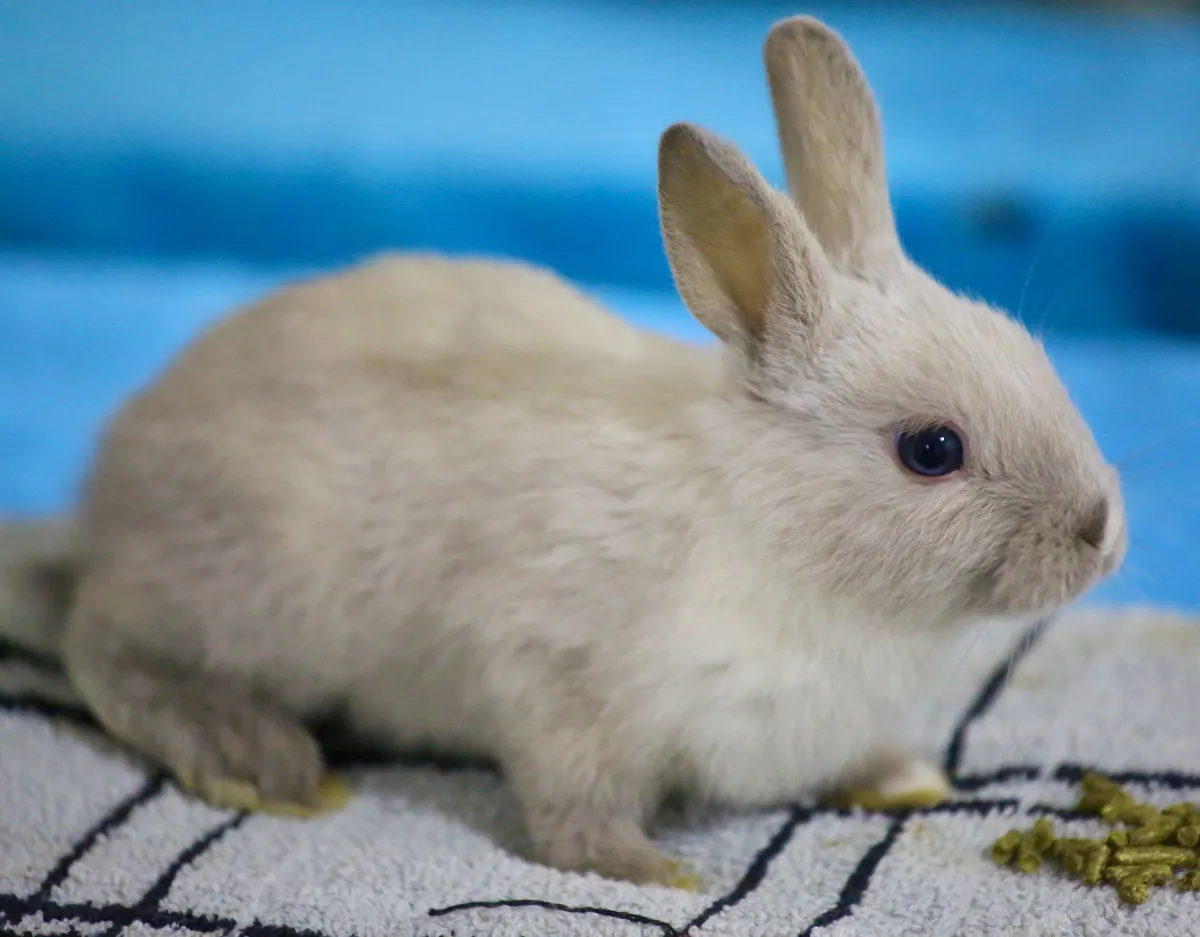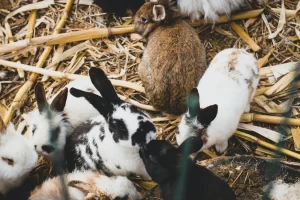Have you ever wondered if a rabbit’s broken leg can heal on its own?
In this article, we will explore the fascinating world of a rabbit’s leg structure and delve into the signs and symptoms of a broken leg.
Discover the factors that can affect a rabbit’s ability to self-heal and the importance of seeking veterinary diagnosis and treatment.
From non-surgical to surgical options, as well as rehabilitation and supportive care, we will guide you through the journey of ensuring a successful healing process for your furry friend.
In This Article
- 1 Key Takeaways
- 2 The Structure of a Rabbit’s Leg
- 3 Signs and Symptoms of a Broken Leg in Rabbits
- 4 Factors Affecting a Rabbit’s Ability to Self-Heal
- 5 Importance of Veterinary Diagnosis and Treatment
- 6 Non-Surgical Treatment Options for a Broken Leg in Rabbits
- 7 Surgical Treatment Options for a Broken Leg in Rabbits
- 8 Rehabilitation and Supportive Care for a Rabbit’s Broken Leg
- 9 Monitoring and Ensuring a Successful Healing Process
- 10 Frequently Asked Questions
- 10.1 How Long Does It Take for a Rabbit’s Broken Leg to Heal?
- 10.2 Can a Rabbit With a Broken Leg Still Hop Around?
- 10.3 Are There Any Home Remedies or Natural Treatments for a Rabbit’s Broken Leg?
- 10.4 What Types of Complications Can Occur if a Rabbit’s Broken Leg Is Left Untreated?
- 10.5 Can a Rabbit’s Broken Leg Heal Completely Without Any Medical Intervention?
- 11 Conclusion
Key Takeaways
- Age and overall health of the rabbit can affect its ability to self-heal a broken leg.
- Creating a safe and stress-free environment is important for the healing process.
- Veterinary diagnosis and treatment are crucial for proper care and management of a broken leg.
- Non-surgical and surgical treatment options are available depending on the severity of the fracture.
The Structure of a Rabbit’s Leg
You should feel the muscles in a rabbit’s leg to understand its structure.
The rabbit leg is a fascinating example of intricate anatomy. It consists of several key components that work together to provide stability, flexibility, and power for movement.
At the core of the leg is a complex network of muscles, tendons, and ligaments that enable the rabbit to hop, run, and leap with agility. The powerful quadriceps femoris muscle group, located in the thigh, allows the rabbit to extend its leg forcefully, while the gastrocnemius muscle in the lower leg provides the necessary propulsion for jumping.
The structure of a rabbit’s leg is specifically adapted for its unique lifestyle, combining strength and agility to navigate its environment efficiently. Understanding the intricacies of rabbit leg anatomy is crucial for anyone caring for these incredible creatures.
Signs and Symptoms of a Broken Leg in Rabbits
If your rabbit has a broken leg, you may notice signs such as limping, swelling, or an unwillingness to put weight on the affected leg. It’s important to seek immediate veterinary attention for your rabbit to prevent further complications and promote proper healing.
Broken legs in rabbits can occur due to various reasons, with the most common causes being falls, accidents, or being caught in tight spaces. To prevent future leg injuries, it’s essential to create a safe and spacious environment for your rabbit, free from obstacles or hazardous objects. Providing proper bedding and flooring can also help reduce the risk of falls and injuries.
Additionally, regular check-ups with a veterinarian can help detect any potential issues early on and ensure the overall health and well-being of your rabbit.
Factors Affecting a Rabbit’s Ability to Self-Heal
In order for a rabbit to effectively self-heal, it relies on factors such as proper nutrition and a clean environment, as well as regular monitoring and care from a veterinarian.
When it comes to healing time, several factors can affect the rabbit’s ability to recover. These factors include:
- Age: Younger rabbits tend to have a faster healing process compared to older ones. This is because young rabbits have a higher metabolic rate and better tissue regeneration abilities.
- Overall health: A rabbit that’s in good overall health, with no underlying illnesses or diseases, will have a better chance of healing quickly.
- Nutrition: Providing a balanced diet rich in vitamins and minerals is crucial for a rabbit’s healing process. Nutritional deficiencies can delay healing and weaken the immune system.
- Environment: A clean and stress-free environment promotes healing by reducing the risk of infection and allowing the rabbit to rest undisturbed.
Importance of Veterinary Diagnosis and Treatment
But, it’s important to consult with a veterinarian for a proper diagnosis and treatment plan for your rabbit’s broken leg. A veterinarian will be able to assess the severity of the fracture and recommend the appropriate course of action. While rabbits have the ability to heal from certain injuries, such as minor cuts or bruises, a broken leg is a more serious condition that requires veterinary expertise.
In some cases, a splint or cast may be sufficient to support the leg and promote healing. However, more complex fractures may require surgical intervention. It’s crucial to seek professional help because without proper treatment, a broken leg can lead to long term consequences for your rabbit, such as chronic pain, limited mobility, and even permanent disability.
Non-Surgical Treatment Options for a Broken Leg in Rabbits
You can explore non-surgical treatment options, such as splints or casts, to aid in the healing process of your rabbit’s broken leg. These non-invasive methods can be effective in promoting natural healing and avoiding the need for surgery.
Here are some non-surgical treatment options you can consider:
- Splints: These are devices that provide support to the fractured bone by immobilizing it. Splints are commonly used for simple fractures and can help in aligning the bone properly, allowing it to heal.
- Casts: Similar to splints, casts also immobilize the fractured bone. They’re made of a hard material, such as fiberglass or plaster, and provide stability and protection to the injured leg.
Surgical Treatment Options for a Broken Leg in Rabbits
If the non-surgical treatment options haven’t been successful, your veterinarian may recommend surgery as an alternative for treating your rabbit’s broken leg. Surgical intervention can be beneficial in cases where the fracture is severe or unstable, or if there’s damage to the surrounding tissues. During the procedure, the veterinarian will carefully realign the broken bones and stabilize them using pins, wires, or plates. This will allow for proper healing and restoration of your rabbit’s leg function.
After the surgery, postoperative care is crucial for a successful recovery. Your veterinarian will provide specific instructions on how to care for your rabbit during this time. This may include administering pain medication, monitoring the incision site for signs of infection, and restricting your rabbit’s movement to prevent further injury. It’s important to follow these instructions closely to ensure your rabbit’s comfort and promote optimal healing.
Regular follow-up appointments will be necessary to assess the progress of the healing process and to make any necessary adjustments to the postoperative care plan. With proper surgical intervention and postoperative care, your rabbit can have a good chance of regaining full use of its leg.
Rehabilitation and Supportive Care for a Rabbit’s Broken Leg
To aid in the healing process, it’s important to provide rehabilitation and supportive care for your rabbit’s broken leg. By implementing proper rehabilitation techniques and effective pain management, you can ensure your rabbit’s recovery is smooth and successful.
Here are some key points to consider:
- Rehabilitation Techniques:
- Range of motion exercises: Gradually moving the leg in a controlled manner helps maintain joint mobility and prevent stiffness.
- Physical therapy: Utilizing exercises such as swimming or walking on a gentle incline can improve muscle strength and coordination.
- Pain Management:
- Medications: Your veterinarian may prescribe pain relievers or anti-inflammatory drugs to alleviate discomfort and reduce swelling.
- Cold therapy: Applying ice packs to the affected area can help alleviate pain and reduce inflammation.
Monitoring and Ensuring a Successful Healing Process
While monitoring the healing process, it’s essential to regularly check for any signs of infection or complications. A broken leg in a rabbit can be a challenging injury to manage, but with proper care and attention, it can heal successfully.
The recovery time for a broken leg in a rabbit can vary depending on the severity of the injury and the overall health of the rabbit. It typically takes several weeks for the bone to heal, and during this time, it’s crucial to provide the rabbit with a safe and comfortable environment to minimize stress and promote healing.
However, potential complications can arise during the healing process, such as infection or delayed union of the bone. Therefore, it’s important to closely monitor the rabbit’s leg for any signs of redness, swelling, discharge, or changes in behavior.
If any complications are suspected, it’s best to consult a veterinarian promptly for appropriate treatment.
Frequently Asked Questions
How Long Does It Take for a Rabbit’s Broken Leg to Heal?
The recovery time for a rabbit’s broken leg depends on various factors such as the severity of the fracture and the treatment options chosen. It is important to consult a veterinarian for appropriate care and guidance.
Can a Rabbit With a Broken Leg Still Hop Around?
You might be wondering if a rabbit can still hop around with a broken leg. While they can adapt to life with a broken leg, surgery may be necessary for proper healing.
Are There Any Home Remedies or Natural Treatments for a Rabbit’s Broken Leg?
Home remedies and natural treatments for a rabbit’s broken leg can help promote healing and reduce pain. However, it is important to seek veterinary care to ensure proper diagnosis and treatment options.
What Types of Complications Can Occur if a Rabbit’s Broken Leg Is Left Untreated?
If a rabbit’s broken leg is left untreated, various complications can arise. These may include infection, deformity, chronic pain, and impaired mobility. It is crucial to prevent and identify broken legs in rabbits to ensure their well-being.
Can a Rabbit’s Broken Leg Heal Completely Without Any Medical Intervention?
Yes, a rabbit’s broken leg can potentially heal completely without medical intervention. However, it is important to consider rehabilitation exercises and surgical options to ensure the best outcome for the rabbit’s recovery.
Conclusion
In conclusion, a rabbit’s broken leg can’t heal on its own. The intricate structure of the leg, combined with the delicate nature of rabbits, requires veterinary diagnosis and treatment.
Whether through non-surgical or surgical options, along with rehabilitation and supportive care, a broken leg can be successfully healed. By monitoring the healing process closely, we can ensure that our furry friends receive the care they need to hop back into action.





